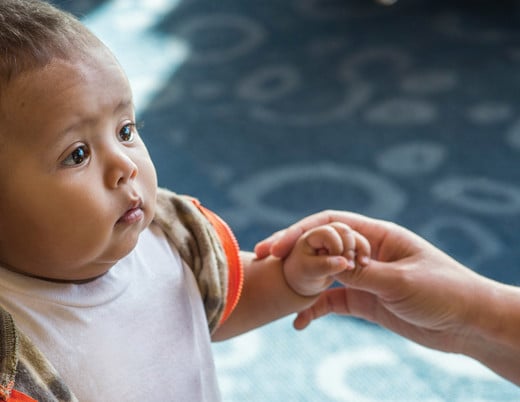Background: socioeconomic disparities and pediatric trauma surgery complications
U.S. patients with lower socioeconomic status experience higher rates of post-surgical complications. Past studies often used narrow parameters for social determinants of health.
Ann M. Kulungowski, MD, surgical director of the Vascular Anomalies Center at Children’s Hospital Colorado, Jenny Stevens, MD, MPH, first author and a former pediatric surgery research fellow and other researchers at the hospital’s Center for Surgery sought to use the Social Vulnerability Index (SVI) to demonstrate the link between high SVI profiles and higher post-surgical morbidity in pediatric trauma patients.
Children’s Colorado surgeons Shannon Acker, MD, assistant professor of Pediatric Surgery at the University of Colorado (CU) School of Medicine, and Denis Bensard, MD, professor of Pediatric Surgery at the CU School of Medicine, also contributed to this study.
Originally created by the Centers for Disease Control and Prevention (CDC) as a disaster preparedness predictor, the tool offers:
- Composite measurements
- Geocoding at census tract level for percentile ranking
- Four categories of population level social vulnerability contributors
Methods: analysis, comparison of patients with high and low SVI
- Participants: highest and intermediate level pediatric trauma patients who underwent surgery at initial hospitalization at Children’s Colorado
- Duration: January 2010-December 2020
- Geocoding identified patients’ census tract of residence, estimated SVI
- Stratified into low (<70th percentile) and high (>70th percentile) SVI groups
They compared demographic, clinical, surgical outcomes and mortality between both groups.
Surgical outcomes analyzed included:
- Hospital length of stay
- Intensive care unit length of stay
- Post-op pneumonia
- Post-op surgical site infection (SSI)
- Post-op deep vein thrombosis
- Post-op urinary tract infection
- Post-op central line associated blood stream infection
Results: high SVI linked to higher rate of post-op surgical site infections
Of the 355 pediatric trauma patients analyzed:
- 76 (21.4%) had high SVI percentiles
- 279 (78.6%) had low SVI percentiles
Key demographic, clinical and surgical outcomes findings
Compared to patients with low SVI, patients with high SVI had a higher likelihood of:
- Government insurance
- 7% vs. 37.2%
- Minority race
- 8% vs. 19.1%,
- Presenting with penetrating trauma
- 9% vs. 19.7%
- Postoperative SSI
- 9% vs. 0.4%
There were no significant differences in other surgical outcomes or mortality.
Conclusion: SVI can help study pediatric trauma healthcare disparities
Study authors concluded SVI has the potential to examine healthcare disparities in this population and identify discrete at-risk target populations for intervention, but future studies are needed.
Featured researchers

Annie M. Kulungowski, MD
Surgical Director, Vascular Anomalies Center
Center for Children's Surgery
Children's Hospital Colorado
Associate professor
Surgery-Peds Surgery
University of Colorado School of Medicine

Shannon Acker, MD
Pediatric surgeon
Pediatric General Surgery
Children's Hospital Colorado
Assistant professor of pediatric surgery
University of Colorado School of Medicine

Denis Bensard, MD
Pediatric surgeon
General Pediatric Surgery
Children's Hospital Colorado
Professor





 720-777-0123
720-777-0123










